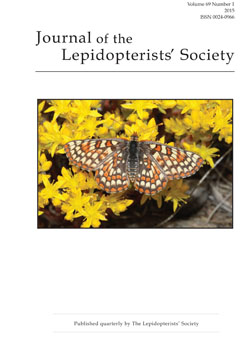Parides vercingetorix (Oberthür 1888) (Papilionidae, Papilioninae, Troidini) is one of the rarest Papilionidae of South America (Collins & Morris 1985, Tyler et al. 1994). Rothschild & Jordan (1906) stated that only two specimens were known, one female described by Boisduval as Papilio coelus (Boisduval 1836) and one male, the type of P. vercingetorix. Nowadays, still only a handful of specimens are known, most of them collected by Le Moult in the early 1900s. Until recently, all came from northern (Montsinery) and northwestern (Mana, St. Laurent du Maroni, St. Jean du Maroni, Plateau des Mines near Gite Moutouchi) French Guiana ( http://parides.genus.free.fr/coel.html). Recently (2012), a male was collected from Saül, central French Guiana (collection C. Castelain; Diringer 2012).
In southern Suriname (N 03 26 28, W 055 22 22, about 275 km south of Paramaribo), at 10th November 2012, a freshly emerged P. vercingetorix female (FIGURE) was collected in primary forest along a track leading from the Tapanahony river to Poti hill, a small granite inselberg, about 90 km north of the Brazilian border. The butterfly was flying along the herbal layer, showing the typical behavior of searching for hostplants.
This finding extends the distribution of this rare species in about 250 km west from Saül to southern Suriname. Nothing is known about its biology, however, all specimens known were collected in the months of February, October and November. As these are months in which little collecting is generally done, this may partly explain the paucity of collected specimens.






